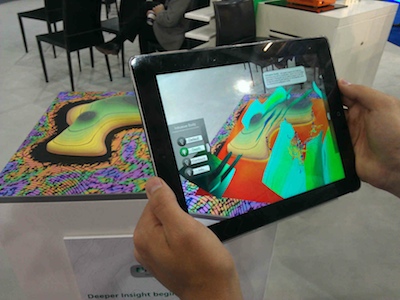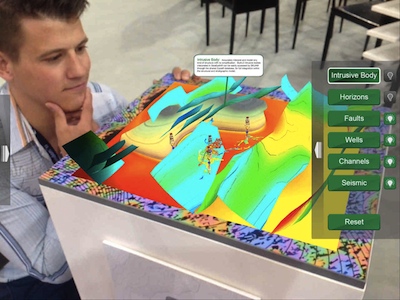EAGE 2013 in a nutshell
/ I left London last night for Cambridge. On the way, I had a chance to reflect on the conference. The positive, friendly vibe, and the extremely well-run venue. Wi-Fi everywhere, espresso machines and baristas keeping me happy and caffeinated.
I left London last night for Cambridge. On the way, I had a chance to reflect on the conference. The positive, friendly vibe, and the extremely well-run venue. Wi-Fi everywhere, espresso machines and baristas keeping me happy and caffeinated.
Knowledge for sale
I saw no explicit mention of knowledge sharing per se, but many companies are talking about commoditizing or productizing knowledge in some way. Perhaps the most noteworthy was an update from Martyn Millwood Hargrave at Ikon's booth. In addition to the usual multi-client reports, PowerPoint files, or poorly architected database, I think service companies are still struggling to find a model where expertise and insight can be included as a service, or at least a value-add. It's definitely on the radar, but I don't think anyone has it figured out just yet.
Better than swag
Yesterday I pondered the unremarkability of carrot-and-ginger juice and Formula One pit crews. Paradigm at least brought technology to the party. Forget Google Glass, here's some augmented geoscience reality:


Trends good and bad
This notion of 3D seismic vizualization and interpretation is finally coming to gathers. The message: if you are not going pre-stack, you are missing out. Pre-stack panels are being boasted in software demos by the likes of DUG, Headwave, Transform, and more. Seems like this trend has been moving in slow motion for about a decade.
Another bandwagon is modeling while you interpret. I see this as an unfeasible and potentially dangerous claim, but some technologies companies are creating tools and workflows to fast-track the seismic interpretation to geologic model building workflows. Such efficiencies may have a market, but may push hasty solutions down the value chain.
What do you think? What trends do you detect in the subsurface technology space?








 Except where noted, this content is licensed
Except where noted, this content is licensed